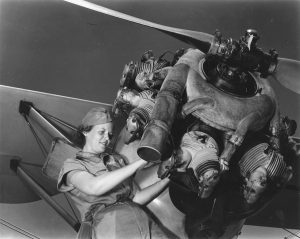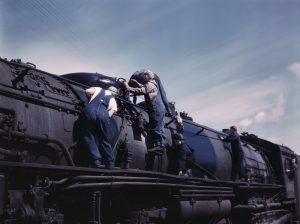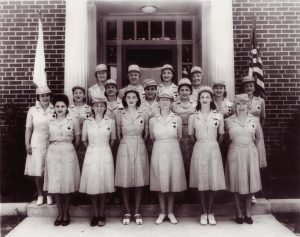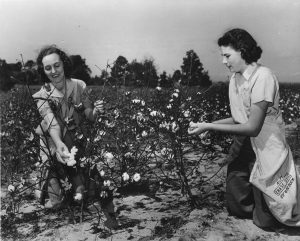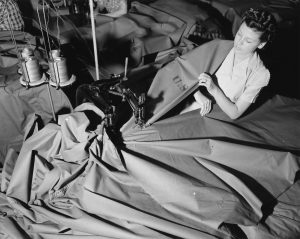During World War II, more than six million women joined the civilian workforce, filling jobs left vacant by the men who went to war. They labored in the lumber mills and steel mills, the foundries and shipyards. They became clerical workers and taxi drivers, mechanics and police officers, and they served their country in the war effort through various auxiliary organizations. Government propaganda, including the fictional Rosie the Riveter, sought to make these non-traditional jobs more appealing to women. Those efforts proved to be successful, as roughly one-third of the civilian workforce between the years 1940 and 1945 was comprised of women. During those years, they produced an astounding 300,000 aircraft, 12,000 ships, 86,000 tanks, and 64,000 landing craft in addition to millions of artillery pieces and small weapons. Despite the fact that many lost their jobs following the end of the war, the legacy of Rosie the Riveter continues to live on.

